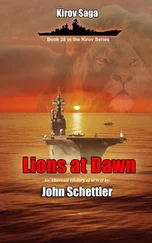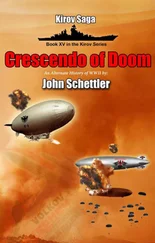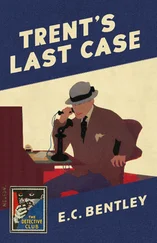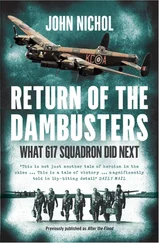JP sat down on his bed. ‘These don’t bloody well…’ he said.
I looked over at him for the rest of the sentence. ‘Work?’ I suggested. Still fully clothed, he was fast asleep, dead to the world, flat out, zonked. ‘Hmm,’ I thought, picking up my book, ‘it’s all right for you, mate. How am I going to get to sleep?’ I sat down for a second. The next thing I knew, the alarm was going off. I was still in the armchair, the book on my lap, lights blazing, and it was eight hours later.
* * *
John Peters: In modern warfare air power is the dominant and deciding factor. Without air superiority, or better still air supremacy, war is unwinnable. If the enemy has air superiority, you will lose. A primary objective of almost any air force is to establish a ‘favourable air situation’. This is achieved primarily by a Counter Air Campaign (CAC). Typical missions in a CAC include:
Offensive Counter Air (OCA) – knocking out hostile airfields and enemy air assets;
Escort – friendly fighters providing cover for the bomber waves and engaging enemy fighters;
Sweep – fighters looking for trade over enemy territory;
SEAD – Suppression of Enemy Air Defences.
OCA missions are designed to reduce the enemy air force sortie rate, i.e., to prevent enemy aircraft taking off, permanently if possible. This is done by closing down runways, knocking out Hardened Aircraft Shelter (HAS) sites, destroying aircraft on the ground, shutting off access routes between the HAS sites and the runways. Alternatively an OCA mission may concentrate on destroying some vital installation on the airfield, such as its Petrol, Oil and Lubricant (POL) facility.
The Tornado’s primary conventional role is OCA – the task we had always trained for in Europe. Few modern jets, like the Migs and Mirages operated by the Iraqis, can take off unless they have an unbroken stretch of concrete to operate from – the MOS, or Minimum Operating Strip. Given the size, number and excellence of the Iraqi airfields, denying them these strips in this war was going to be a question of continual, perhaps indefinite, harassment. We would have to crater the concrete and tarmac surfaces with the JP-233s and the iron bombs faster than the Iraqi engineers could repair them.
Most people understand what a bomb is. The JP-233 is more complicated, but it is essentially a very fat, very long canister containing dozens and dozens of bomblets and mines, of varying weights and explosive power. The delivery aircraft, with this weapon slung under it, flies over an enemy runway. The JP-233 spits a hard rain of destruction out over the target area. Some of these munitions detonate on contact, cratering the operating surfaces. Some have delayed-action fuses, timed to go off over the next day or so, to discourage the runway repair parties; for example, they will explode when a bulldozer comes along to help clear up the mess. It is not a friendly weapon. The only snag with it is that for the weapon to be fully effective, the Tornado must overfly a fair stretch of the enemy runway at a steady height. This makes the aircraft vulnerable to ground fire.
Escort assets – your own side’s fighters – are often scarce and will only be assigned to valuable or critical attack packages, if at all. An escort formation of, say, Tornado F-3s or F-15s may be assigned in general area support of several OCA attack packages going forward at the same time. The fighters will step in whenever and wherever an opposing air threat shows itself. In this way, one group of fighters can ride shotgun for a whole bunch of different attack packages. This flexibility in the escort’s role is made possible by AW ACS, which can see the big air picture, far and wide, and keep extremely close tabs on how it is developing.
SEAD includes:
Defence suppression – e.g., F-4G and F-16C aircraft – ‘Wild Weasels’ – using HARM – High-speed Anti-Radiation Missiles – to knock out enemy missile radars, or iron bombs against enemy air defence network nodes and headquarters;
Communications jamming – carried out by specially equipped aircraft like the C-130 ‘Compass Call’;
Stand-off jamming – EF-111 ‘Raven’ aircraft jamming enemy early-warning radars from long range;
Close-in jamming – EA-6B ‘Prowlers’ jamming enemy search and tracking radars, and enemy communications, at close quarters.
Before the Gulf War, not everyone, particularly some of the Allied ground commanders, agreed that air power was crucial to success in modern warfare. After it, there was a lot less argument about that fact, summed up by the grudging comment of one senior US Army General: ‘Air did good.’
The scepticism about the role of air power before the Gulf conflict was not surprising, given that the high-tech modern air war machine had never been really tested in all its complexity. Many of the weapons, like HARM, ALARM and JP-233, were untried in combat. Launching hundreds of aircraft in sequential, co-ordinated, self-supporting packages from widely dispersed operating bases, incorporating different national air forces, and projecting this air power over a target with split-second timing is hugely complex. It was also hugely untried. Airspace Control – the ‘Deconfliction’, or avoidance of mid-air collisions between ‘blue on blue’ or friendly aircraft operating in close proximity -was a major intellectual challenge in its own right. This was before you counted in the enemy’s own destructive capabilities. So nobody was sure if it would all really work, when it came right down to it. We began to get an idea of how it might work at the preliminary war briefing. This took place in the Muharraq War Operations Centre on 16 January, the day after the UN deadline ran out. It was attended by the whole Squadron.
This briefing was intense, thorough, and electrifying. We were given our target. Our four-Tornado formation was part of a huge Allied air package, involving eighty-plus aircraft – what the Americans call a ‘gorilla’. Our four-Tornado formation would be attacking the Iraqi airbase at Ar Rumaylah. Its mission was, essentially, to harass, as we had thought, and, ideally, to close down the runways. This mission was coordinated with an attack by the US warplanes on the Iraqi oil wells near the airfield.
We were part of a gigantic aerial steamroller, its purpose the systematic, clinical and complete demolition of the Iraqi war machine. Packages like our own would be hammering away continually at the Iraqis once the attack began. ‘Peeling the Onion’ was the metaphor some people in the military used to describe this methodical and cumulative destruction, the stripping away of the successive layers of the Iraqi defences. We were beginning with their early-warning systems, their AW ACS and long-range radars: this removed their ‘eyes’, denying crucial information to their military commanders, increasing the time it would take them to react to incoming threats. At the same time, we would be taking out their ‘C3’, or Command, Control and Communications assets, severing the brain and nervous system from the body of the Iraqi forces, denying the battlefield and sector commanders the means to co-ordinate their military forces. It was a rolling wave of destruction, kicking down the doors for more and more bombers to go in, to strike at their core assets – like chemical facilities, arms factories -and the Republican Guard that had so savagely invaded Kuwait. But first, the main task of our own offensive was to KO Saddam’s air power. This was where we came in. It meant knocking out their airfields and destroying their fighters – cutting off their fists. The big difference in the Gulf War from most preceding wars was that we had the technology to be precise in our attacks: we would be trying very hard not to kill civilians.
Читать дальше












